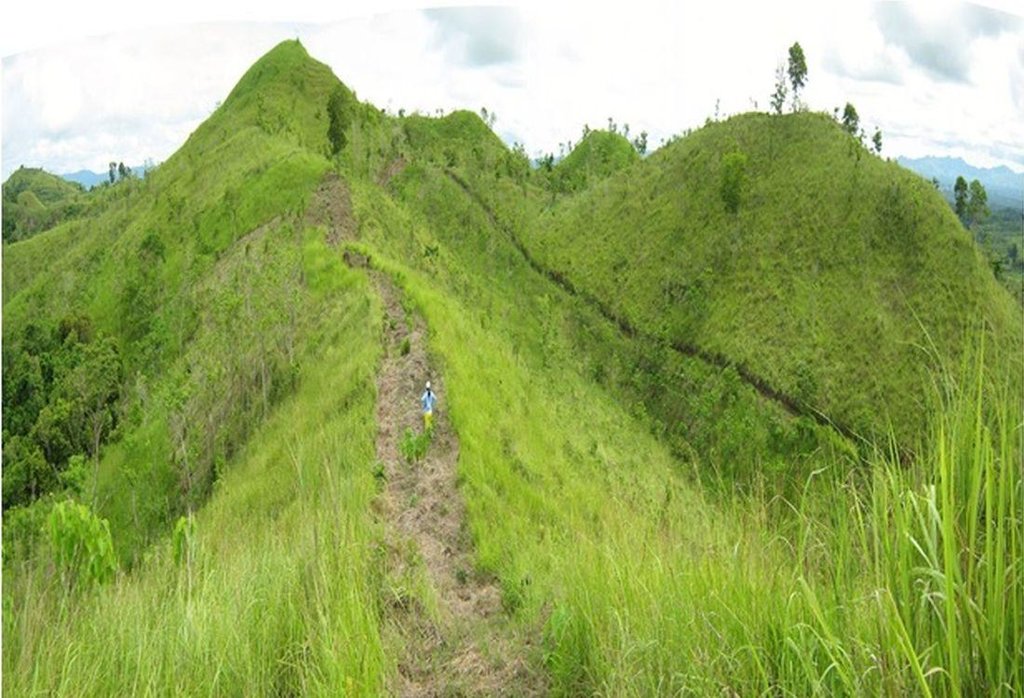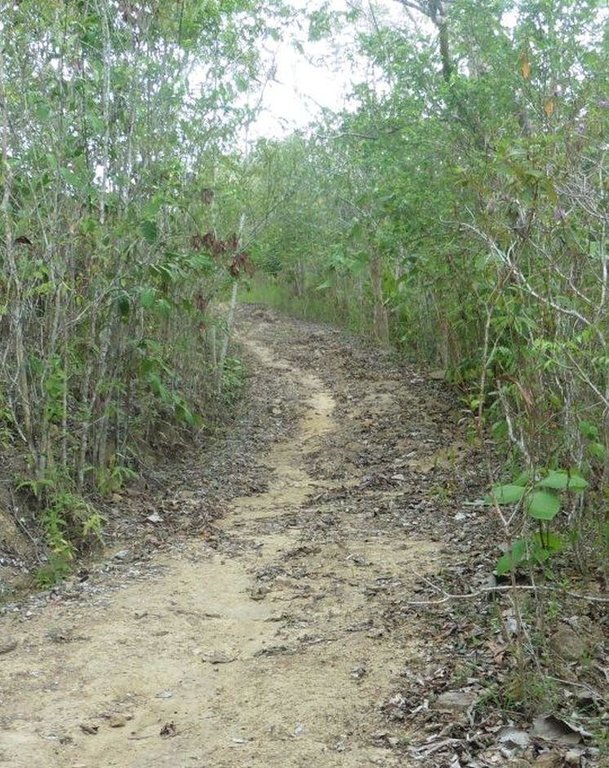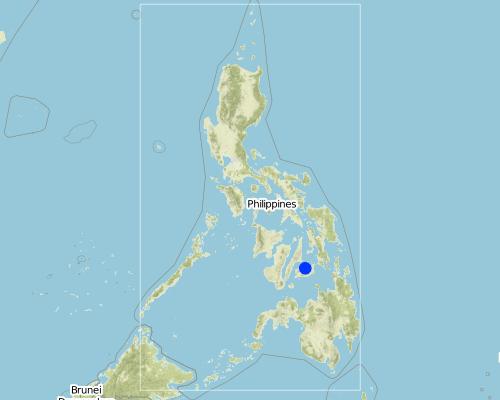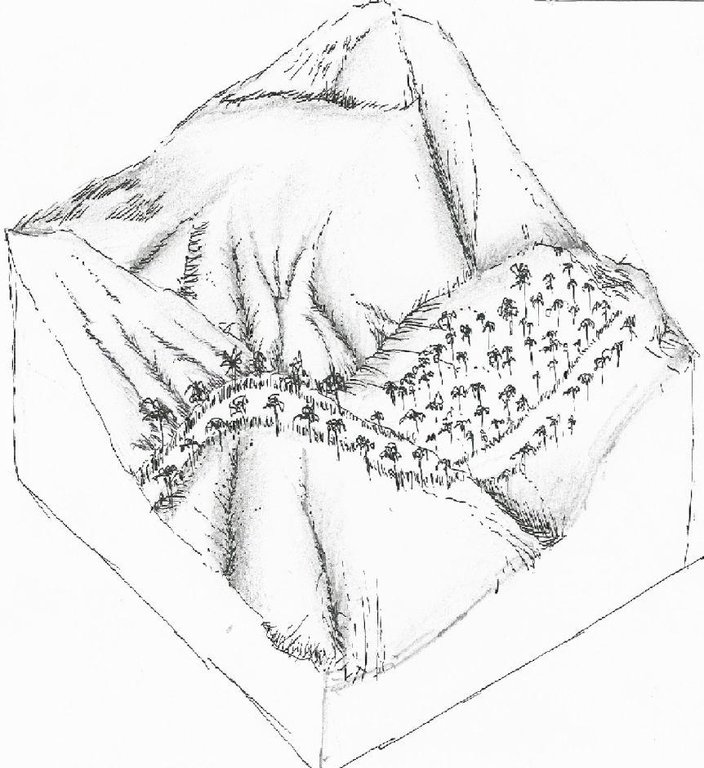Firebreaks/ Greenbreaks [الفيليبين]
- تاريخ الإنشاء:
- تحديث:
- جامع المعلومات: Philippine Overview of Conservation Approaches and Technologies
- المحرر: –
- المُراجع: Fabian Ottiger
technologies_1705 - الفيليبين
عرض الأقسام
توسيع الكل طي الكل1. معلومات عامة
1.2 تفاصيل الاتصال بالأشخاص الرئيسيين لمصدر المعلومات والمؤسسات المشاركة في تقييم وتوثيق التقنية
الشخص (الأشخاص) الرئيسي لمصدر المعلومات
متخصص في الإدارة المستدامة للأراضي:
Padilla Alberto
Danao Municipality, Local Government Unit
Danao City, Cebu, Philippines
الفيليبين
متخصص في الإدارة المستدامة للأراضي:
Dacumos Evangeline
Department of Agriculture-Bureau of Soils and Water Management
Room 522, 5th Floor, Department of Agriculture Building, Elliptical Road, Quezon City, 1100 Metro Manila, Philippines
الفيليبين
متخصص في الإدارة المستدامة للأراضي:
Espanto Patrick Benson
Department of Agriculture-Bureau of Soils and Water Management
Room 522, 5th Floor, Department of Agriculture Building, Elliptical Road, Quezon City, 1100 Metro Manila, Philippines
الفيليبين
متخصص في الإدارة المستدامة للأراضي:
Dinamling Djolly Ma
Department of Agriculture-Bureau of Soils and Water Management
Room 522, 5th Floor, Department of Agriculture Building, Elliptical Road, Quezon City, 1100 Metro Manila, Philippines
الفيليبين
متخصص في الإدارة المستدامة للأراضي:
Castillo Forester Emma
emmancastillo2014@gmail.com
Department of Environment and Natural Resources-Forest Management Bureau
Visayas Avenue, Diliman, Quezon City
الفيليبين
اسم المؤسسة (المؤسسات) التي سهلت توثيق/تقييم التقنية (إذا كان ذلك على صلة)
Bureau of Soils and Water Management (Bureau of Soils and Water Management) - الفيليبيناسم المؤسسة (المؤسسات) التي سهلت توثيق/تقييم التقنية (إذا كان ذلك على صلة)
Danao Municipality - الفيليبيناسم المؤسسة (المؤسسات) التي سهلت توثيق/تقييم التقنية (إذا كان ذلك على صلة)
Forest Management Bureau (Forest Management Bureau) - الفيليبين1.3 الشروط المتعلقة باستخدام البيانات الموثقة من خلال WOCAT
متى تم تجميع البيانات (ميدانيا)؟:
11/06/2015
يوافق جامع المعلومات والشخص (لاشخاص) الرئيسي لمصدر المعلومات على الشروط المتعلقة باستخدام البيانات الموثقة من خلال WOCAT:
نعم
1.5 الإشارة إلى الاستبيان (الاستبيانات) حول مناهج الإدارة المستدامة للأراضي
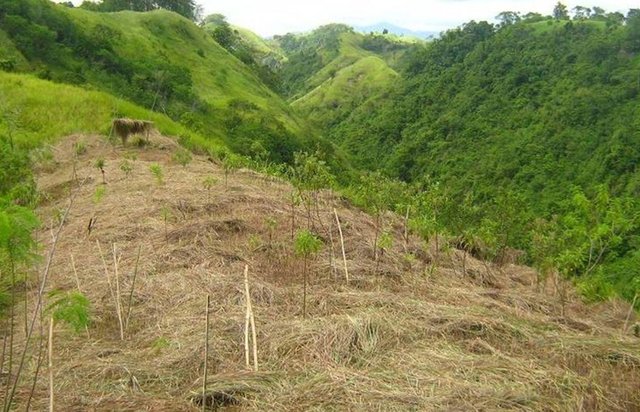
Assisted Natural Regeneration (ANR) [الفيليبين]
A process of rehabilitating degraded forest lands by taking advantage of trees already growing in the area.
- جامع المعلومات: Philippine Overview of Conservation Approaches and Technologies
2. وصف تقنيةالإدارة المستدامي للأراضي
2.1 وصف مختصر للتقنية
تعريف التقنية:
Gaps in vegetation or other combustible material that act as barriers to prevent and/ or control the spreading of forest fires to other areas.
2.2 وصف تفصيلي للتقنية
الوصف:
Firebreaks are 1,000-meter long, ten meters wide, located in the periphery/boundary and/or top of the ridge as barriers to slow or stop the progress of a fire. Greenbreaks are formed within the firebreaks by planting fire-resistant species in the gap portions such as kakawate (Gliricidia sepium), banana (Musa) abaca (Musa textilis), malunggay (Moringa oleifera), and cassava (Manihot esculenta). As a practice, fire breaks are established in every ten hectares to form a block, but it can vary depending on the slope of the area. Fires tend to spread quickly in higher slopes compared to flat areas, thus, more firebreaks are recommended.
Purpose of the Technology: Firebreaks/greenbreaks are established to protect the forest trees and wildlings from disturbances and wildfire. In case of forest fire, firebreaks/green breaks prevent the spread of fire from one block to another. Wildlings are seedlings derived from seeds scattered by birds, insects, animals and wind without human intervention, and allowed to grow naturally in the forest. The green breaks are planted with cash crops as immediate source of food and additional income for the land users.
Establishment / maintenance activities and inputs: The first step in creating fire breaks is the removal of all combustible materials such as deadwoods and cogon grasses (Imperata cylindrica) by using hoe or plow. Then, fire-resistant plant species such as kakawate (Gliricidia sepium) cuttings (i.e. 1-meter high) are staked at 1.5- meter spacing on both sides of the 10-meter wide firebreak. Kakawate is the preferred plant species because the leaves have high Nitrogen content and resistant to fire and drought. Maintenance of firebreaks/green breaks is done before the onset of the dry season. It is done through brushing of invasive weeds and plating of root crops. The pruning of kakawate is done every three years." Bayanihan" (rotational schedule of labour), a traditional communal concept of voluntary work is practiced during the establishment of the technology.
Natural / human environment: The area is part of the forest reserve in Danao, Bohol primarily intended for nature conservation and protection. It is about 100-500 m.a.s.l with moderately rolling to hilly slopes. It is under humid tropics climate with an average annual rainfall of 1500-2000 mm per year. The soil is loam, shallow depth, low fertility, with good drainage and medium water storage capacity. The area has high biodiversity as indicated by the presence of different indigenous trees and plants species, and wild animals and birds. The land users who apply the technology are small-holder farmers.These are members of a local cooperative. The population density is about 10-50 persons per sq. km. Since extraction of resources from the forest is prohibited, off-farm income is very important to the land users. Access to basic services and infrastructures are low.
2.3 صور التقنية
2.5 البلد/المنطقة/المواقع التي تم تنفيذ التقنية فيها والتي يغطيها هذا التقييم
البلد:
الفيليبين
المنطقة/الولاية/المحافظة:
Brgy. San Miguel
مزيد من التفاصيل حول الموقع:
Danao, Bohol
Map
×2.6 تاريخ التنفيذ
في حالة عدم معرفة السنة بالتحديد، يرجى الإشارة إلى التاريخ التقريبي:
- منذ أكثر من 50 عامًا (تقليدي)
2.7 إدخال التقنية
- DENR (Department of Environment and Natural Resources) protocol on reforestration
3. تصنيف تقنية الإدارة المستدامي للأراضي
3.2 نوع (أنواع) استخدام الأراضي الحالية حيث يتم تطبيق التقنية

الغابات/ الأراضي الحرجية
- Tree regeneration
التعليقات:
Major land use problems (compiler’s opinion): Forest fire, competition with weedy species
Major land use problems (land users’ perception): spread of invasive alien species
Other type of forest: tree regeneration
Problems / comments regarding forest use: Increase of biodiversity (Wildlife)
Forest products and services: fruits and nuts, other forest products / uses (honey, medical, etc.)
3.3 مزيد من المعلومات حول استخدام الأراضي
عدد مواسم الزراعة في السنة:
- 2
3.4 مجموعةالإدارة المستدامة للأراضي التي تنتمي إليها هذه التقنية
- إدارة الغابات الطبيعية وشبه الطبيعية
- Firebreak
3.5 انتشار التقنية
حدد انتشار التقنية:
- منتشرة بالتساوي على مساحة
إذا كانت التقنية منتشرة بالتساوي على منطقة ما، فحدد المنطقة التقريبية المغطاة:
- 10-1 كم2
التعليقات:
Total area covered by the SLM Technology is 3.6 m2.
3.6 التدابير التقنية في مجال إلادارة المستدامة للأراضي

التدابير النباتية
- V3: إزالة الغطاء النباتي
- V5: أخرى
التعليقات:
Main measures: vegetative measures
Specification of other vegetative measures: Pruning of kakawate, root crop planting
Type of vegetative measures: aligned: -along boundary
3.7 الأنواع الرئيسية من تدهور الأراضي التي تناولتها التقنية

التدهور البيولوجي
- (Bc): تناقص الغطاء النباتي
- (Bh): فقدان الموائل
- (Bf): الآثار الضارة للحرائق
التعليقات:
Main type of degradation addressed: Bf: detrimental effects of fires
Secondary types of degradation addressed: Bc: reduction of vegetation cover, Bh: loss of habitats
Main causes of degradation: deforestation / removal of natural vegetation (incl. forest fires)
3.8 منع أو حد أو عكس تدهور الأراضي
تحديد هدف التقنية فيما يتعلق بتدهور الأراضي:
- منع تدهور الأراضي
التعليقات:
Main goals: prevention of land degradation
4. المواصفات الفنية، وأنشطة التنفيذ، والمدخلات، والتكاليف
4.1 الرسم الفني للتقنية
4.2 المواصفات الفنية/شروحات الرسم الفني
Firelines established in the ANR site.
Location: Barangay San Miguel. Danao, Bohol
Date: June 10, 2015
Technical knowledge required for field staff / advisors: moderate
Technical knowledge required for land users: moderate
Main technical functions: control of fires, reduction of dry material (fuel for wildfires)
Secondary technical functions: stabilisation of soil (eg by tree roots against land slides), sediment retention / trapping, sediment harvesting, increase of biomass (quantity), perimeter dirt road
Aligned: -along boundary
Vegetative material: T : trees / shrubs
Vertical interval within rows / strips / blocks (m): 1.5
Width within rows / strips / blocks (m): 10
Trees/ shrubs species: Kakawate trees
4.4 أنشطة التأسيس
| النشاط | نوع التدبير | التوقيت | |
|---|---|---|---|
| 1. | clearing of cogon grass in the firelines | نباتية | February |
| 2. | Planting of kakawate cuttings | نباتية | on set of rainy season |
4.5 التكاليف والمدخلات اللازمة للتأسيس
| تحديد المدخلات | الوحدة | الكمية | التكاليف لكل وحدة | إجمالي التكاليف لكل مدخل | % من التكاليف التي يتحملها مستخدمو الأراضي | |
|---|---|---|---|---|---|---|
| العمالة | clearing of cogon grass in the firelines and Planting of kakawate cuttings | ha | 1,0 | 26,66 | 26,66 | 100,0 |
| إجمالي تكاليف إنشاء التقنية | 26,66 | |||||
التعليقات:
Duration of establishment phase: 3 month(s)
4.6 الصيانة/الأنشطة المتكررة
| النشاط | نوع التدبير | التوقيت/الوتيرة | |
|---|---|---|---|
| 1. | brushing/clearing | نباتية | Every after 4 months |
| 2. | Pruning of kakawate/per year | نباتية | every 3 years |
4.7 التكاليف والمدخلات اللازمة للصيانة/للأنشطة المتكررة (سنويًا)
| تحديد المدخلات | الوحدة | الكمية | التكاليف لكل وحدة | إجمالي التكاليف لكل مدخل | % من التكاليف التي يتحملها مستخدمو الأراضي | |
|---|---|---|---|---|---|---|
| العمالة | brushing/clearing as well as pruning of kakawate/per year | ha | 1,0 | 31,1 | 31,1 | 100,0 |
| إجمالي تكاليف صيانة التقنية | 31,1 | |||||
5. البيئة الطبيعية والبشرية
5.1 المناخ
هطول الأمطار السنوي
- < 250 مم
- 251- 500 ملم
- 501 - 750ملم
- 1,000-751 ملم
- 1,500-1,100 ملم
- 2,000-1,500 ملم
- 3,000-2,001 ملم
- 4,000-3,100 ملم
- > 4000 ملم
المنطقة المناخية الزراعية
- رطبة
Thermal climate class: tropics
5.2 طوبوغرافيا
متوسط الانحدارات:
- مسطح (0-2%)
- بسيط (3-5%)
- معتدل (6-10%)
- متدحرج (11-15%)
- تلال (16-30%)
- شديدة الانحدار(31-60%)
- فائقة الانحدار (>60%)
التضاريس:
- هضاب/سهول
- أثلام مرتفعة
- المنحدرات الجبلية
- منحدرات التلال
- منحدرات في السفوح
- قاع الوادي
المنطقة الارتفاعية:
- 100-0 متر فوق سطح البحر
- 500-101 متر فوق سطح البحر
- 1,000-501 متر فوق سطح البحر
- 1,500-1,001 متر فوق سطح البحر
- 2,000-1,501 متر فوق سطح البحر
- 2,500-2,100 متر فوق سطح البحر
- 3,000-2,501 متر فوق سطح البحر
- 4,000-3,001 متر فوق سطح البحر
- > 4000 متر فوق سطح البحر
التعليقات والمواصفات الإضافية بشأن التضاريس:
Altitudinal zone: 101-500 m a.s.l. (220m)
5.3 التربة
متوسط عمق التربة:
- ضحل جدًا (0-20 سم)
- ضحلة (21-50 سم)
- متوسطة العمق (51-80 سم)
- عميقة (81-120 سم)
- عميقة جدًا (> 120 سم)
قوام التربة (التربة السطحية):
- متوسط ( طميي، سلتي)
المواد العضوية في التربة السطحية:
- متوسطة (1-3%)
إذا كان متاحًا، قم بإرفاق وصف كامل للتربة أو تحديد المعلومات المتوفرة، على سبيل المثال نوع التربة، الرقم الهيدروجيني/ درجة حموضة التربة، قدرة التبادل الكاتيوني، النيتروجين، الملوحة وما إلى ذلك.
Soil vertility is medium
Soil drainage/infiltration is medium
Soil water storage capacity is medium
5.4 توافر المياه ونوعيتها
منسوب المياه الجوفية:
< 5 م
توافر المياه السطحية:
متوسط
5.5 التنوع البيولوجي
تنوع الأنواع:
- مرتفع
5.6 خصائص مستخدمي الأراضي الذين يطبقون التقنية
التوجه السوقي لنظام الإنتاج:
- الكفاف (الإمداد الذاتي)
المستوى النسبي للثروة:
- ضعيف
أفراداً أو مجموعات:
- موظف (شركة، حكومة)
الجنس:
- نساء
- رجال
اذكر الخصائص الأخرى ذات الصلة لمستخدمي الأراضي:
Land users applying the Technology are mainly common / average land users
Population density: 10-50 persons/km2
Annual population growth: 1% - 2%; 1%
100% of the land users are poor and own 100% of the land.
Market orientation of production system: Forest conservation and self subsistence ( Green breaks planted as cash crop )
5.7 متوسط مساحة الأرض المملوكة أو المستأجرة من قبل مستخدمي الأراضي الذين يطبقون التقنية
- < 0.5 هكتارا
- 0.5 - 1 هكتار
- 1 -2 هكتار
- 2 - 5 هكتار
- 5 - 15 هكتار
- 15 - 50 هكتار
- 50 - 100هكتار
- 500-100 هكتار
- 1,000-500 هكتار
- 10,000-1,000 هكتار
- > 10,000 هكتار
هل يعتبر هذا نطاقًا صغيرًا أو متوسطًا أو واسعا (في إشارة إلى السياق المحلي)؟:
- على نطاق متوسط
التعليقات:
Average: 75 ha
5.8 ملكية الأراضي، وحقوق استخدام الأراضي، وحقوق استخدام المياه
ملكية الارض:
- دولة
حقوق استخدام الأراضي:
- وصول مفتوح (غير منظم)
5.9 الوصول إلى الخدمات والبنية التحتية
الصحة:
- ضعيف
- معتدل
- جيد
التعليم:
- ضعيف
- معتدل
- جيد
المساعدة التقنية:
- ضعيف
- معتدل
- جيد
العمل (على سبيل المثال خارج المزرعة):
- ضعيف
- معتدل
- جيد
الأسواق:
- ضعيف
- معتدل
- جيد
الطاقة:
- ضعيف
- معتدل
- جيد
الطرق والنقل:
- ضعيف
- معتدل
- جيد
مياه الشرب وخدمات الصرف الصحي:
- ضعيف
- معتدل
- جيد
6. الآثار والتصريحات الختامية
6.1 الآثار التي أظهرتها التقنية في الموقع
الآثار الاجتماعية والاقتصادية
الإنتاج
إنتاج الأعلاف
إنتاج الخشب
الدخل والتكاليف
عبء العمل
الآثار الاجتماعية والثقافية
المؤسسات المجتمعية
التخفيف من حدة الصراع
Improved livelihoods and human well-being
التعليقات/ حدد:
Through the technology, People's Organization (PO) members were encouraged to plant cash crops as greenbreaks as an immediate source of food and additional income.
الآثار الايكولوجية
دورة المياه / الجريان السطحي
الجريان السطحي
التنوع البيولوجي: الغطاء النباتي، الحيوانات
التنوع النباتي
تنوع الموائل
الحد من مخاطر المناخ والكوارث
انبعاث الكربون والغازات المسببة للاحتباس الحراري
خطر الحريق
6.2 الآثار التي أظهرتها التقنية خارج الموقع
الضرر على البنية التحتية العامة/ الخاصة
6.3 تعرض التقنية وحساسيتها لتغير المناخ التدريجي والظواهر المتطرفة/الكوارث المرتبطة بالمناخ (كما يراها مستخدمو الأراضي)
تغير مناخ تدريجي
تغير مناخ تدريجي
| الموسم | نوع التغير المناخي/ المتطرف | كيف تتعامل التقنية مع ذلك؟ | |
|---|---|---|---|
| درجة الحرارة السنوية | زيادة | جيدا |
الظواهر المتطرفة / الكوارث المرتبطة بالمناخ
الكوارث الجوية
| كيف تتعامل التقنية مع ذلك؟ | |
|---|---|
| عاصفة ممطرة محلية | غير معروف |
| عاصفة هوائية محلية | غير معروف |
الكوارث المناخية
| كيف تتعامل التقنية مع ذلك؟ | |
|---|---|
| جفاف | جيدا |
العواقب الأخرى المتعلقة بالمناخ
العواقب الأخرى المتعلقة بالمناخ
| كيف تتعامل التقنية مع ذلك؟ | |
|---|---|
| انخفاض فترة النمو | غير معروف |
6.4 تحليل التكلفة والعائد
كيف يمكن مقارنة العوائد نسبة لتكاليف الإنشاء (من وجهة نظر مستخدمي الأراضي)؟
عوائد قصيرة الأجل:
سلبي قليلا
عوائد طويلة الأجل:
إيجابي
كيف تتم مقارنة العوائدمع كلفة الصيانة/التكاليف المتكررة (من وجهة نظر مستخدمي الأراضي)؟
عوائد قصيرة الأجل:
إيجابي
عوائد طويلة الأجل:
إيجابي
6.5 اعتماد التقنية
- أكثر من 50%
من بين جميع الذين تبنوا التقنية، كم عدد الذين فعلوا ذلك بشكل تلقائي، أي دون تلقي أي حوافز مادية/مدفوعات؟:
- 10-0%
التعليقات:
100% of land user families have adopted the Technology with external material support
Comments on acceptance with external material support: The Department of Environment and Natural Resources (DENR) provided financial and technical support in the establishment of the technology.
Comments on spontaneous adoption: No spontaneous adoption was recorded without the support of the government (DENR) or private agencies.
6.7 نقاط القوة / المزايا / الفرص التي توفرها التقنية
| نقاط القوة/ المزايا/ الفرص من وجهة نظر مستخدمي الأراضي |
|---|
|
The technology does not require heavy equipment and instrument during the establishment How can they be sustained / enhanced? Use of indigenous tools during establishment such as hoe and plows |
| نقاط القوة/ المزايا/ الفرص من وجهة نظر جامع المعلومات أو غيره من الاشخاص الرئيسيين لمصدر المعلومات |
|---|
|
Relative small financial input in the establishment of the technology How can they be sustained / enhanced? Regular clearing of firebreaks |
6.8 نقاط ضعف / مساوىء / مخاطر التقنية وسبل التغلب عليها
| نقاط الضعف/ المساوىء/ المخاطر من وجهة نظر جامع المعلومات أو غيره من الاشخاص الرئيسيين لمصدر المعلومات | كيف يمكن التغلب عليها؟ |
|---|---|
| Fires could cross on the firebreaks because of big and overlapping canopies. | Regular trimming on the canopies of trees near the firelines and brushing of weeds/grasses. |
الروابط والوحدات المواضيعية
توسيع الكل طي الكلالروابط

Assisted Natural Regeneration (ANR) [الفيليبين]
A process of rehabilitating degraded forest lands by taking advantage of trees already growing in the area.
- جامع المعلومات: Philippine Overview of Conservation Approaches and Technologies
الوحدات المواضيعية
لا يوجد وحدات مواضيعية



